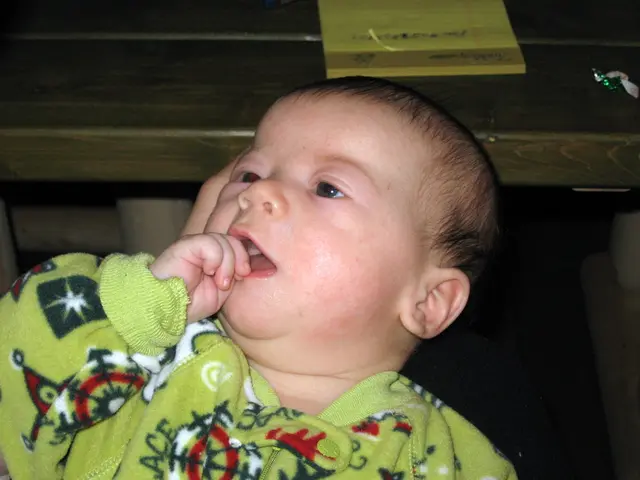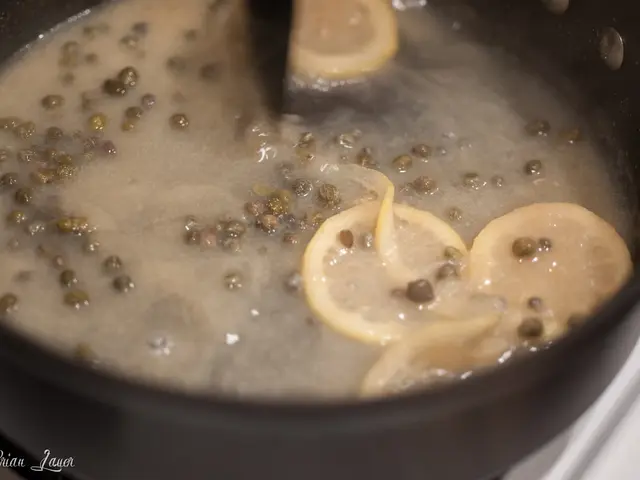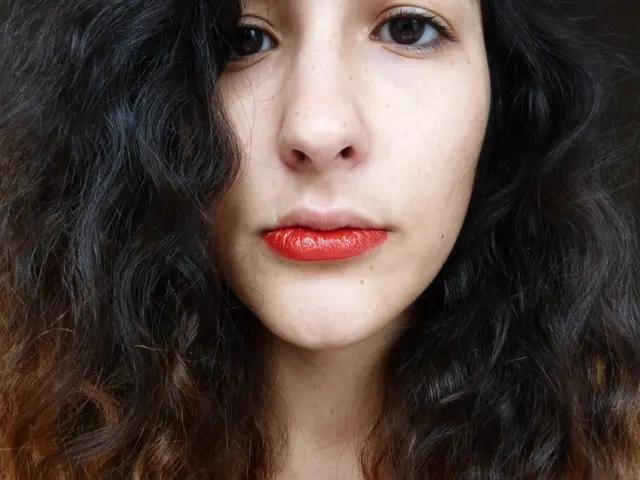Frequent Dental Care for Dogs: What's the Optimal Brushing Frequency?
Ready to win the coveted title of Top Dog Parent? If you're skipping your pooch's dental care, bad breath could cost you the crown.
Vets suggest brushing Fido's chompers every day, but at least a couple of times a week is good, too. Let's face it; daily brushing is probably more of a Dreamworld scenario for most pet parents (guilty as charged!).
Here's why making oral hygiene a part of your routine is crucial for keeping your fur baby healthy.
Do I really need to brush my pup's teeth?
Forgetting to brush leaves your pet vulnerable to periodontal disease, mouth pain, tooth loss, and various health issues. (Poor pooch!) Just like with human teeth, plaque hardens into tartar on dog teeth if they remain unbrushed. Tartar beneath the gumline causes gum inflammation (gingivitis) that can progress to painful periodontal disease.
"Dental disease is the most frequently diagnosed health problem for dogs," says veterinarian Douglas Kratt, former president of the American Veterinary Medical Association. "In fact, most dogs have some evidence of dental disease by the age of 3 years. All breeds of dogs are susceptible, although toy and small breeds are particularly at risk."
"Dogs with dental disease are also at risk of other health problems, such as heart and kidney disease," Kratt says.
Shopping cart reminder: Dog toothbrush
How often should teeth be brushed?
The American Veterinary Medical Association recommends brushing daily, but a few times a week might work just fine. So aim for daily brushing and throw yourself a party if you manage it 2 to 3 times per week. Brushing is the best way to keep the plaque monster at bay and prevent serious dental woes.
How to brush a dog's teeth?
The answer: Carefully, carefully, and more carefully.
New to the tooth brushing process? Take it slow and easy. If Rover isn't a fan of the toothbrush yet, it's okay. It might take some time to learn to love the routine. Try these steps from the American Kennel Club:
- Timing is crucial: Brush when you and your dog are chilled-out and stress-free.
- A well-lit and comfy spot: Make it a pleasant experience by choosing a spot with good lighting and plenty of room for both of you.
- No rush: Begin by simply touching your dog's teeth with your fingers. Gradually move their lips, touching the top and bottom teeth on each side.
- Meet the brush: Introduce the brush, just touching to begin with, like with your fingers. Each step your dog tolerates brings you closer to a good brushing.
- Taste-testing time: Show the toothpaste to your dog and let them have a sample. Keep in mind that dog-friendly flavors like chicken, beef, or peanut butter might be more appealing than minty fresh.
- Load the brush: Apply paste to the toothbrush and start brushing from the top front teeth.
- Praise and rewards: Praise your dog frequently and shower them with treats or toys to keep them motivated and happy during the process.
- Back and side teeth: Work your way around, brushing side and back teeth on top, moves to the bottom front teeth, then proceed to the sides and back.
- Googly eyes and waggy tails: Throughout the process, keep the praise coming and offer plenty of treats or playtime to ensure your dog looks forward to their bi-weekly dental checkup.
What's the best toothbrush for the job?
A dog toothbrush with soft bristles and a long handle is ideal for getting to those back teeth. A human toothbrush can also do the trick, yet dog-specific products come in sizes and bristle types better suited to your pup.
There's also finger brushes, made of flexible material that fits over your finger, which can be helpful for newbies working on getting their dog's teeth clean.
Toothpaste: A must-have accessory!
Never scrimp on toothpaste for your pets. Human toothpaste is a no-go, as it contains potentially toxic ingredients for dogs. Some human toothpaste contains the sugar alcohol Xylitol, which is incredibly dangerous for dogs to ingest.
Dog toothpaste is safe to swallow and even comes in yummy flavors like chicken, beef, or peanut butter.
Uh-oh alert: If your dog has accidentally ingested human toothpaste, call your vet, the emergency clinic, or the animal poison control center ASAP.
Can I use baking soda to clean Fido's teeth?
Tempted to DIY the toothpaste with baking soda? Not such a great idea. Baking soda isn't appetizing for dogs, so they're unlikely to enjoy the taste, and it might cause a stomachache if swallowed.
My dog won't let me brush their teeth!
If your four-legged friend unleashes their inner Hulk whenever you reach for the toothpaste, don't worry! In most cases, dogs will come to accept toothbrushing, although it might take a while.
To increase your chances of success, follow these tips from veterinarian Douglas Kratt:
- Start toothbrushing when your pup is young. Get the routine established early on.
- Use brushes and toothpaste made specifically for dogs. Pet products will make the experience more pleasant for them.
- Associate the tools with treats, rewards, and praise to create a positive association.
- Go gradually. Take your time introducing the toothbrush to your pooch. Don't expect swift results—it might take several weeks to work up to a thorough brushing.
Too late to start brushing my dog's teeth?
Sure, it's best to start toothbrushing from puppyhood, but even if you've skipped the task completely, it's better late than never for older dogs.
If you have an older dog, you might want to start with an annual exam and professional cleaning to check for emerging issues. Wait a few weeks after a professional cleaning to start gradually introducing toothbrushing to avoid causing additional discomfort.
Other ways to clean your dog's teeth?
The market is flooded with teeth-cleaning toys, treats, and dental chews promising improved dental health. However, according to Kratt, they may not always deliver.
Always consult your vet before introducing your pet to new products to ensure they're safe for your doggo. Some chewy toys and treats can help clean the teeth by mechanical means, but always confirm they're safe for consumption before testing them out.
My dog is in pain!
If you suspect your dog is already battling dental issues, their teeth might be too sensitive for brushing.
"Remember, always be careful when checking out your pet's mouth, because an animal in pain, even a much-loved pet, may bite," Kratt says.
Your vet will assess your pet's oral health during their annual check-ups and alert you to any concerns. Regular brushing should keep your dog's mouth healthy between these exams and make professional cleanings less necessary.
If you notice any of the following symptoms, consult your vet for a dental exam sooner. These could be signs of painful dental disease:
- bad breath
- broken, loose, or discolored teeth
- teeth with plaque buildup
- bleeding from the mouth
- swelling around the mouth
- unusual chewing, drooling, or difficulty eating or drinking water
- reduced appetite
While regular brushing helps reduce the risk of dental problems and associated illnesses, your vet will need to take the lead for dental exams, cleanings, and treatments for oral issues.
In a Nutshell
To ensure your pup's mouth stays fresh and healthy, brushing their teeth at least a couple of times a week is essential.
If your pooch isn't used to brushing, it might take some time to get them comfortable with the idea. Once you've cracked the secret, toothbrushing should become a breeze, helping prevent painful inflammation and infection. That means more kisses, cuddles, and waggy tails with your fur baby.
- Shopping cart reminder: Dog toothbrush, dog-friendly toothpaste
- Toothbrushing should become part of your routine to keep your pet healthy and prevent dental problems.
- Daily brushing is ideal, but a few times a week might work just fine.
- Brushing a dog's teeth requires care and patience, especially if your pet isn't accustomed to the process.
- To increase your chances of success, start toothbrushing your pet from a young age, use pet-specific products, and associate the process with treats, rewards, and praise.
- If your dog has already developed dental issues, consult your vet for a dental exam and treatment. Watch for symptoms such as bad breath, broken teeth, plaque buildup, bleeding, swelling, unusual chewing, drooling, difficulty eating or drinking water, reduced appetite, or pain.
- Regular brushing helps reduce the risk of dental problems and associated illnesses, but your vet will likely need to take the lead for dental exams, cleanings, and treatments for oral issues.







